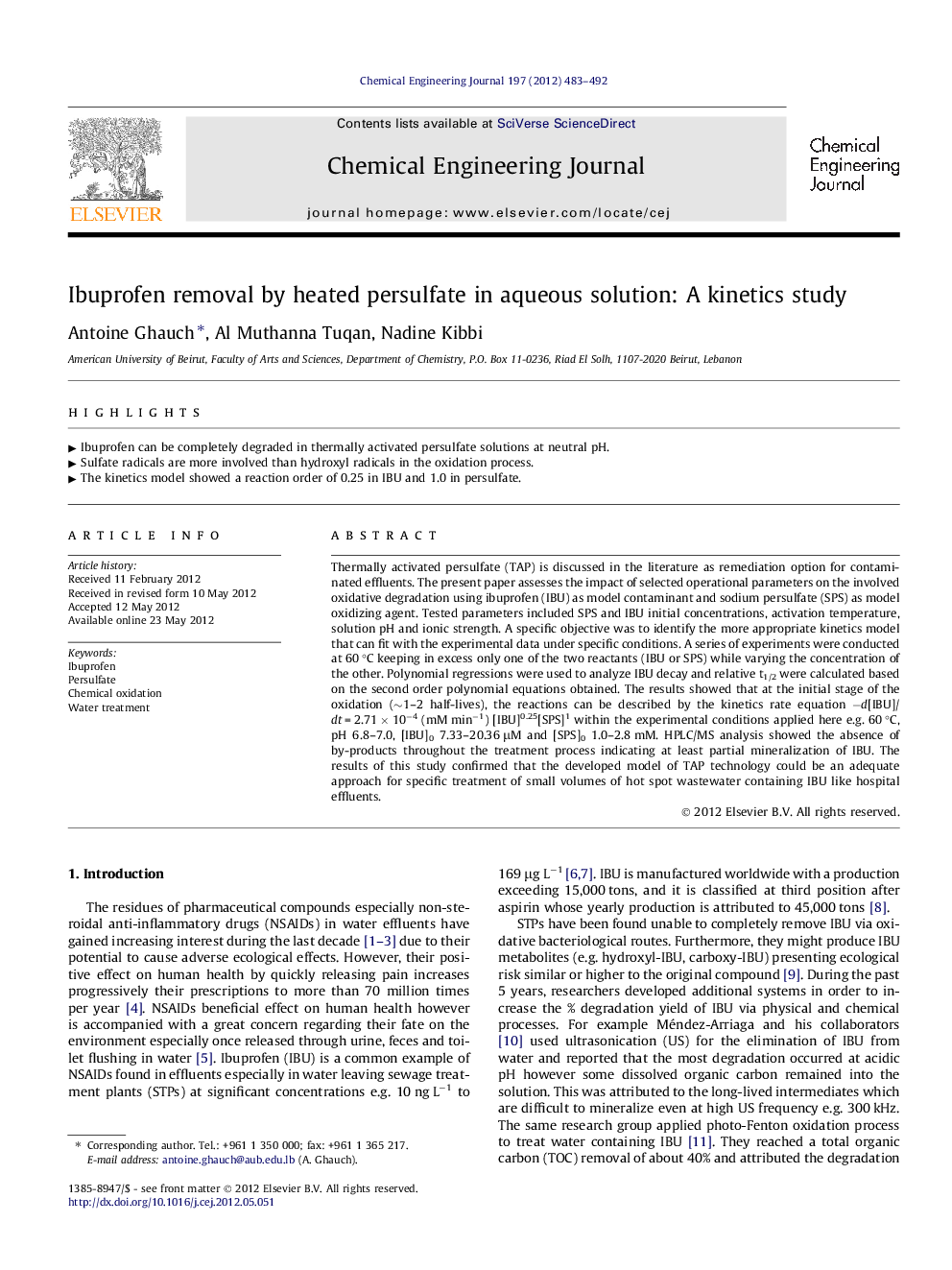| Article ID | Journal | Published Year | Pages | File Type |
|---|---|---|---|---|
| 149717 | Chemical Engineering Journal | 2012 | 10 Pages |
Thermally activated persulfate (TAP) is discussed in the literature as remediation option for contaminated effluents. The present paper assesses the impact of selected operational parameters on the involved oxidative degradation using ibuprofen (IBU) as model contaminant and sodium persulfate (SPS) as model oxidizing agent. Tested parameters included SPS and IBU initial concentrations, activation temperature, solution pH and ionic strength. A specific objective was to identify the more appropriate kinetics model that can fit with the experimental data under specific conditions. A series of experiments were conducted at 60 °C keeping in excess only one of the two reactants (IBU or SPS) while varying the concentration of the other. Polynomial regressions were used to analyze IBU decay and relative t1/2 were calculated based on the second order polynomial equations obtained. The results showed that at the initial stage of the oxidation (∼1–2 half-lives), the reactions can be described by the kinetics rate equation −d[IBU]/dt = 2.71 × 10−4 (mM min−1) [IBU]0.25[SPS]1 within the experimental conditions applied here e.g. 60 °C, pH 6.8–7.0, [IBU]0 7.33–20.36 μM and [SPS]0 1.0–2.8 mM. HPLC/MS analysis showed the absence of by-products throughout the treatment process indicating at least partial mineralization of IBU. The results of this study confirmed that the developed model of TAP technology could be an adequate approach for specific treatment of small volumes of hot spot wastewater containing IBU like hospital effluents.
► Ibuprofen can be completely degraded in thermally activated persulfate solutions at neutral pH. ► Sulfate radicals are more involved than hydroxyl radicals in the oxidation process. ► The kinetics model showed a reaction order of 0.25 in IBU and 1.0 in persulfate.
